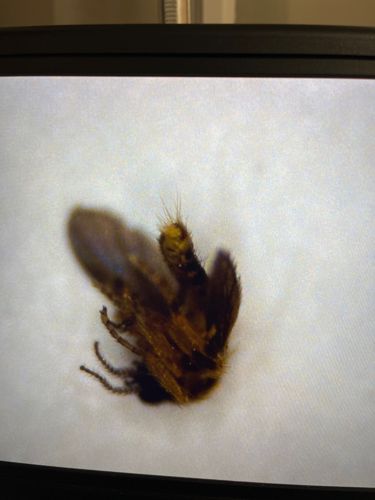Drain Fly
Scientific Name: Psychodidae (subfamily Psychodinae)
Order & Family: Diptera (Flies), Psychodidae (Moth Flies or Drain Flies)
Size: 2-5 mm (0.08-0.2 inches)

Natural Habitat
Typically found in moist environments, especially around drains, sewers, septic tanks, and areas with decaying organic matter and standing water.
Diet & Feeding
Larvae feed on decaying organic matter, fungi, and microorganisms found in the slime layers of drains and pipes. Adult flies do not feed or feed on nectar/water.
Behavior Patterns
Adults are weak, erratic fliers and are typically nocturnal or crepuscular. They are often seen resting on walls near breeding sites. Their life cycle from egg to adult is relatively short, typically 1-3 weeks depending on environmental conditions.
Risks & Benefits
Potential risks include being a nuisance pest within homes and businesses due to their presence. While generally not harmful to humans, very large infestations can sometimes be associated with respiratory issues in sensitive individuals due to airborne particles from their bodies or breeding sites. They are not known to transmit diseases to humans. Benefits are limited but they play a minor role in breaking down organic matter in their natural habitats.
Identified on: 9/25/2025